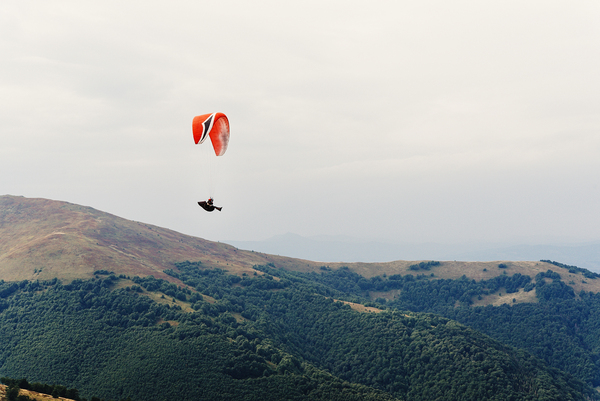The first steps and the development of parachuting
The first relatively safe canopy is considered the development of Leonardo da Vinci, which was created according to his drawings and tested only after 3 centuries.
Of course, before him there were attempts to create a parachute or plan on a similarity made from pieces of fabric from a height, but such experiments often ended in death or serious injury to the tester.
After the appearance and distribution of balloons, parachutes have become one of the ways to attract the audience’s attention with the aim to earn money. The competition for the accuracy of landing is exactly like the first tricksters, who jumped off the balls and landed in a pre-marked place for the sake of performance.

Value awareness and rapid evolution
The next breakthrough in the development of parachuting came at the beginning of the 20th century. At this time, aviation was actively developing and used for military as well as civil purposes, so a means to save the crew was more necessary than ever.
After the First World War, when aviation was actively used, its value was very quickly realized and the world plunged into the active development of parachuting.
The main goal was to improve maneuvering and landing, because at that time the paratroopers were very lacking in accuracy.Around the world, they developed and improved methods for calculating the jump for throwing and landing people and cargo in a strictly defined area.
Different types of parachutes were created to perform various tasks, also, great attention was paid to the ability to avoid obstacles and to land in a pre-selected place.
From the military to sports competitions
Very quickly, mankind has mastered ever longer delays in parachute opening and high-altitude jumps with immediate opening of the canopy. From the 30th to the 40th year, heights from 80 to 12,000 meters were mastered in skydiving. In that period of history, every day brought a new world skydiving record.
Skydivers learned how to manage an open chute in all weather conditions, and to control the movement in free fall, both individually and as part of a group. To assess the skill of skydivers, sports exercises were formed – landing accuracy and canopy opening delay with the implementation of elements in free fall – rotations in the horizontal plane and rotations in the vertical plane.
The first skydiving competitions were held in 1951 and have been gaining popularity ever since. Afterwards, parachuting began to gain worldwide popularity and various tournaments and disciplines appeared in which athletes demonstrate their skills.
